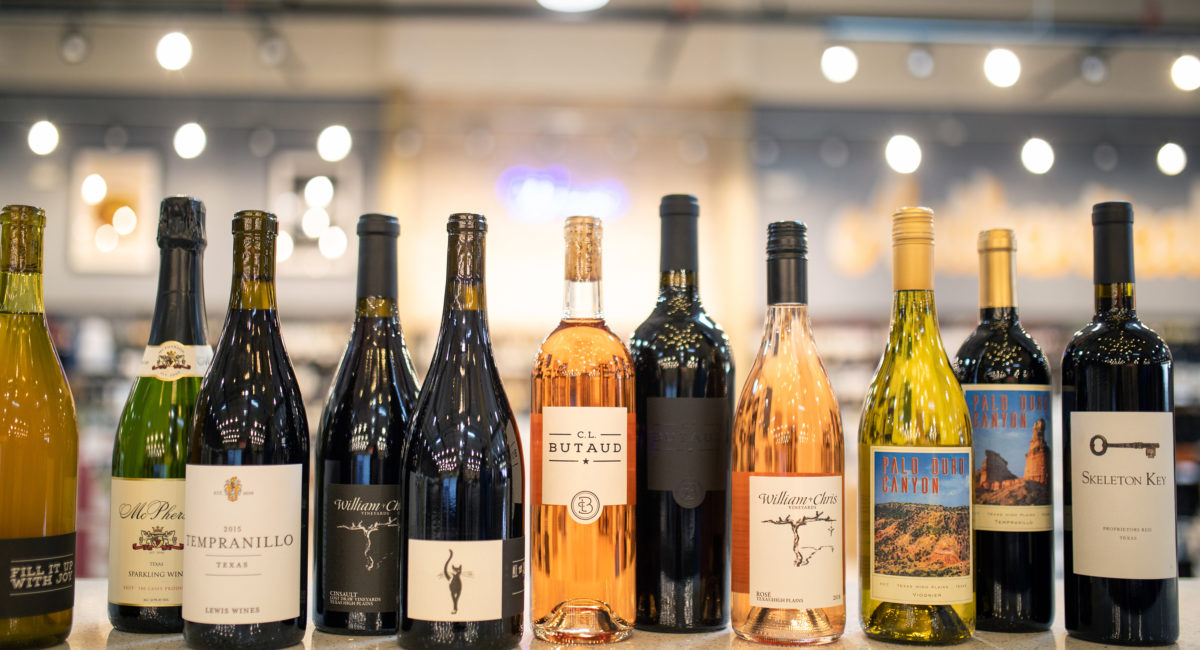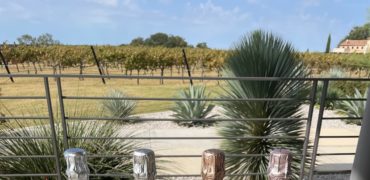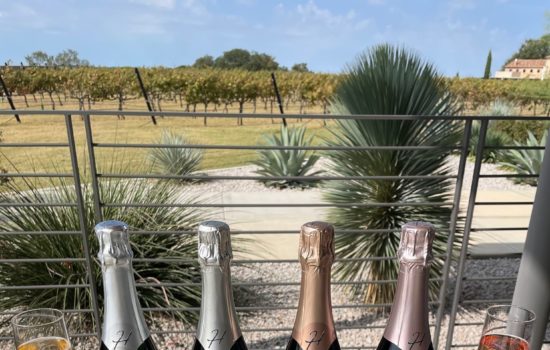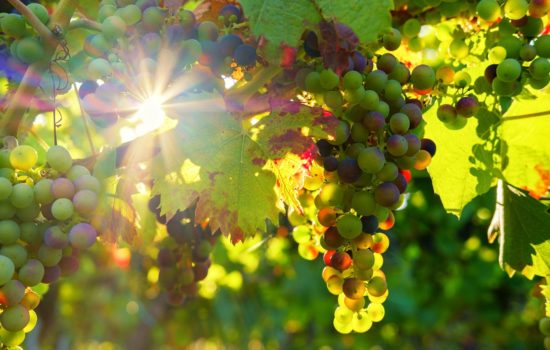CELEBRATING THE LEGACY OF TEXAS WINE DURING TEXAS WINE MONTH
Texas was colonized by the Spaniards with Catholic Priests bringing religion to the “New World.” Along with the Catholic Priests came a need for red wines to be used during Catholic Masses. The long ocean voyages into the tropics on those rolling ships made many barrels of sacramental wine unpalatable. Therefore the Monks and Friars had to bring in grape vines to grow grapes in order to make red wine to use in Catholic Masses. Texas is believed to have had the first winery in the “New World” as a result of necessity.
After the Civil War, immigrants came to America to re-start their lives. Italian immigrants brought their zeal for wine to the United State. Among those immigrants were Frank and Maria Qualia who settled in Del Rio where they established Val Verde Winery in 1883. Others also came to establish wineries in Texas with Texas having a significant number of wineries. Then Prohibition became the law in 1920 which prohibited breweries, distilleries, and wineries from making their product EXCEPT the making and controlled Distribution of Sacramental Wines to the Catholic Church strictly for religious purposes. Frank, Maria, and their seven children tended the vineyards and continued to make Sacramental Wines which sustained them until Prohibition ended in 1933. When Frank passed away in 1936, the vineyards and winery were passed to the youngest son of Frank and Maria, being Louis Qualia. Louis turned the winery to his youngest son, Thomas who manages the vineyards and winery today. Per the Val Verde Winery’s website, “In 2008, Val Verde Winery completed its 125th year of continuous winemaking. It is the oldest bonded winery in the state of Texas, and was awarded the Land Heritage Award from the Department of Agriculture for single-family-ownership of the vineyards for over 100 years. Because of longevity and family pride, the Val Verde Winery is a landmark and an innovator in the growing Texas wine industry. Its survival is an inspiration to its future and the future of the industry in Texas.”
It was not until 1976 when Texas got its first winery AFTER Prohibition. Dr. Roy McPherson from Texas Technological College established Llano Estacado Winery on the Texas High Plains where grapes were being planted and grown for the new winery. Soon thereafter, Ed and Susan Auler founded Fall Creek Winery on the shores of Lake Burnett. During this same time, Paul and Merrill Bonariggo were establishing their vineyards near where Paul was working as a Physical Therapist in Bryan. This winery is named Messina Hof in recognition of where Paul’s and Merrill’s family roots started. By 1980, Texas had three working wineries and limited vineyards.
Cotton farmers on the Texas High Plains started looking at other crops to plant in lieu of the high water demand crop of cotton. The Newsom Family and Bingham Family along with Vijay Reddy and his wife started to grow grapes. As a result, Texas grapes started to become available for wineries in Texas to use in making wines. By 2005, Texas had 50 wineries and was starting to grow its wine industry with the help of Texas Tech University, Texas A and M University, Grayson Community College of Oenology, and an industry support group called Texas Wine and Grape Growers Association.
The Wine Industry across Texas has exploded with over 600 wineries and fast approaching 700 wineries. As a result, Texas is now the State with the fourth largest number of wineries in the Country.
Texas has a fine wine legacy with its oldest winery being Val Verde Winery still going strong as a family winery. Most of Texas’s wineries are family owned and operated with few large corporations leading the way in wine production. Texas is just fine with its Mom and Pop Wineries being handed down to the next generation!
Texas was colonized by the Spaniards with Catholic Priests bringing religion to the “New World.” Along with the Catholic Priests came a need for red wines to be used during Catholic Masses. The long ocean voyages into the tropics on those rolling ships made many barrels of sacramental wine unpalatable. Therefore the Monks and Friars had to bring in grape vines to grow grapes in order to make red wine to use in Catholic Masses. Texas is believed to have had the first winery in the “New World” as a result of necessity.
After the Civil War, immigrants came to America to re-start their lives. Italian immigrants brought their zeal for wine to the United State. Among those immigrants were Frank and Maria Qualia who settled in Del Rio where they established Val Verde Winery in 1883. Others also came to establish wineries in Texas with Texas having a significant number of wineries. Then Prohibition became the law in 1920 which prohibited breweries, distilleries, and wineries from making their product EXCEPT the making and controlled Distribution of Sacramental Wines to the Catholic Church strictly for religious purposes. Frank, Maria, and their seven children tended the vineyards and continued to make Sacramental Wines which sustained them until Prohibition ended in 1933. When Frank passed away in 1936, the vineyards and winery were passed to the youngest son of Frank and Maria, being Louis Qualia. Louis turned the winery to his youngest son, Thomas who manages the vineyards and winery today. Per the Val Verde Winery’s website, “In 2008, Val Verde Winery completed its 125th year of continuous winemaking. It is the oldest bonded winery in the state of Texas, and was awarded the Land Heritage Award from the Department of Agriculture for single-family-ownership of the vineyards for over 100 years. Because of longevity and family pride, the Val Verde Winery is a landmark and an innovator in the growing Texas wine industry. Its survival is an inspiration to its future and the future of the industry in Texas.”
It was not until 1976 when Texas got its first winery AFTER Prohibition. Dr. Roy McPherson from Texas Technological College established Llano Estacado Winery on the Texas High Plains where grapes were being planted and grown for the new winery. Soon thereafter, Ed and Susan Auler founded Fall Creek Winery on the shores of Lake Burnett. During this same time, Paul and Merrill Bonariggo were establishing their vineyards near where Paul was working as a Physical Therapist in Bryan. This winery is named Messina Hof in recognition of where Paul’s and Merrill’s family roots started. By 1980, Texas had three working wineries and limited vineyards.
Cotton farmers on the Texas High Plains started looking at other crops to plant in lieu of the high water demand crop of cotton. The Newsom Family and Bingham Family along with Vijay Reddy and his wife started to grow grapes. As a result, Texas grapes started to become available for wineries in Texas to use in making wines. By 2005, Texas had 50 wineries and was starting to grow its wine industry with the help of Texas Tech University, Texas A and M University, Grayson Community College of Oenology, and an industry support group called Texas Wine and Grape Growers Association.
The Wine Industry across Texas has exploded with over 600 wineries and fast approaching 700 wineries. As a result, Texas is now the State with the fourth largest number of wineries in the Country.
Texas has a fine wine legacy with its oldest winery being Val Verde Winery still going strong as a family winery. Most of Texas’s wineries are family owned and operated with few large corporations leading the way in wine production. Texas is just fine with its Mom and Pop Wineries being handed down to the next generation!










